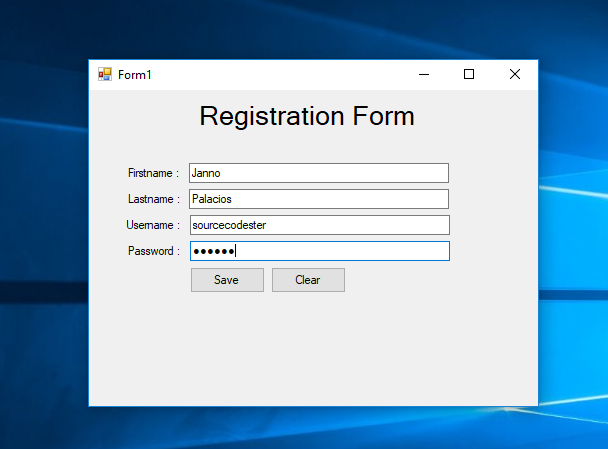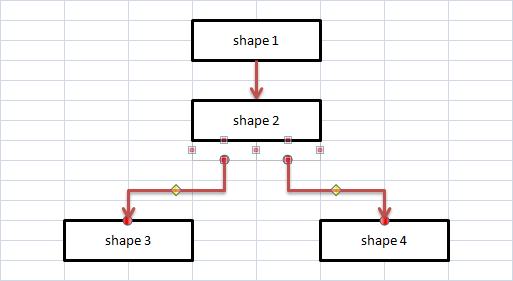

- #Assign keyup to multiple textboxes how to#
- #Assign keyup to multiple textboxes code#
- #Assign keyup to multiple textboxes free#

Use for time-based values, such as 9:46:55 or 09:46 A.M. Use for dates, such as or March 14, 2007. Use for hyperlinks, such as a Universal Naming Convention (UNC) path or a Uniform Resource Locator (URL). Use for data that should be either 1 (true) or 0 (false). Use for positive or negative whole numbers, such as 1234, –1234, or $1,234. Use for data such as names, addresses, phone numbers, Social Security numbers, and so on. The following table lists the data types that are available for text boxes. For example, if you want users to enter British pounds into a Transaction amount text box, you can choose the Whole Number (integer) data type, and then choose formatting options so that the values typed into the text box are displayed with the pound (£) currency symbol.
#Assign keyup to multiple textboxes free#
The default data type for a text box is Text (string), but you are free to change this. When you design a new, blank form template, you can change the default data type for a control. If you need to bind a text box to a different field, right-click the text box, and then click Change Binding on the shortcut menu. Me.Text = txbPartNo.Name & ": " & txbPartNo.TextĪgain, please be aware that this is just 1 label and 1 textbox that of many that will be on the form.Īm I missing something? Do you see where my error is at.Note: Changing the field name does not change the binding between a text box and field in the data source. Private Sub txbPartNo_Textchanged(ByVal sender As System.Object, ByVal e As EventArgs)ĭim txbPartNo As TextBox = DirectCast(sender, TextBox) Me.Text = lblPrtNo.Name & ": " & lblPrtNo.Text Private Sub lblPrtNo_Textchanged(ByVal sender As System.Object, ByVal e As EventArgs)ĭim lblPrtNo As Label = DirectCast(sender, Label) TxbPartNo.TextAlign = ContentAlignment.MiddleLeftĪddHandler txbPartNo.TextChanged, AddressOf txbPartNo_Textchanged TxbPartNo.Font = New (txbPartNo.Font, FontStyle.Bold) 'This generates the textbox for the user to enter the Part No. LblPrtNo.TextAlign = ContentAlignment.MiddleLeftĪddHandler lblPrtNo.TextChanged, AddressOf lblPrtNo_Textchanged LblPrtNo.Font = New (lblPrtNo.Font, FontStyle.Regular) Public Sub frmOrderEntry2_Load(ByVal sender As System.Object, ByVal e As System.EventArgs) Handles Me.Load ' Unfortunately with I debug it, the form is still blank.
#Assign keyup to multiple textboxes code#
I've attempted to insert the needed code to display these controls on the form.

I'm attempting to do similar things here, only with multiple labels, buttons and textboxes. Newbox.Name = "TextBox" & row & "_" & col Newbox.Location = New Point(10 + 100 * row, 10 + 25 * col) 'its current contents will be displayed in the title barĭim box As TextBox = DirectCast(sender, TextBox)Ī little cleaner solution would be as follows ' 'when you modify the contents of any textbox, the name of that textbox and Private Sub TextBox_TextChanged(sender As System.Object, e As System.EventArgs) 'connect it to a handler, save a reference to the array and add it to the form controlsĪddHandler newbox.TextChanged, AddressOf TextBox_TextChanged 'create a new textbox and set its properties Private Sub Form1_Load(sender As System.Object, e As System.EventArgs) Handles MyBase.Load
#Assign keyup to multiple textboxes how to#
' Simple example of how to create and use textboxes at run time Feel free to ask any follow up questions. Please remember to mark this thread as solved when yoou get what you need. In any case here is a simple example I just coded up for you. You could still unzip it and look at the vb files.


 0 kommentar(er)
0 kommentar(er)
